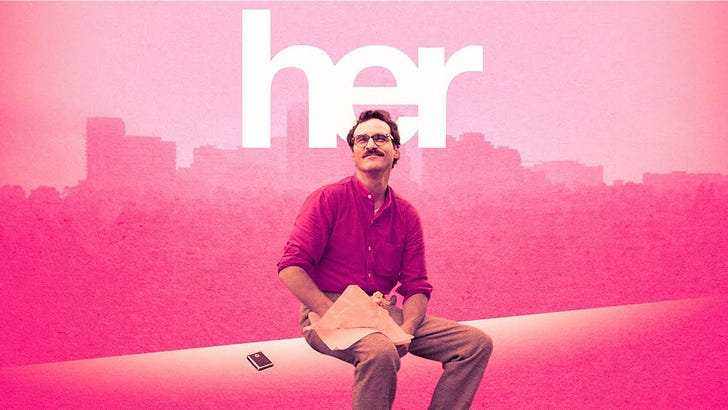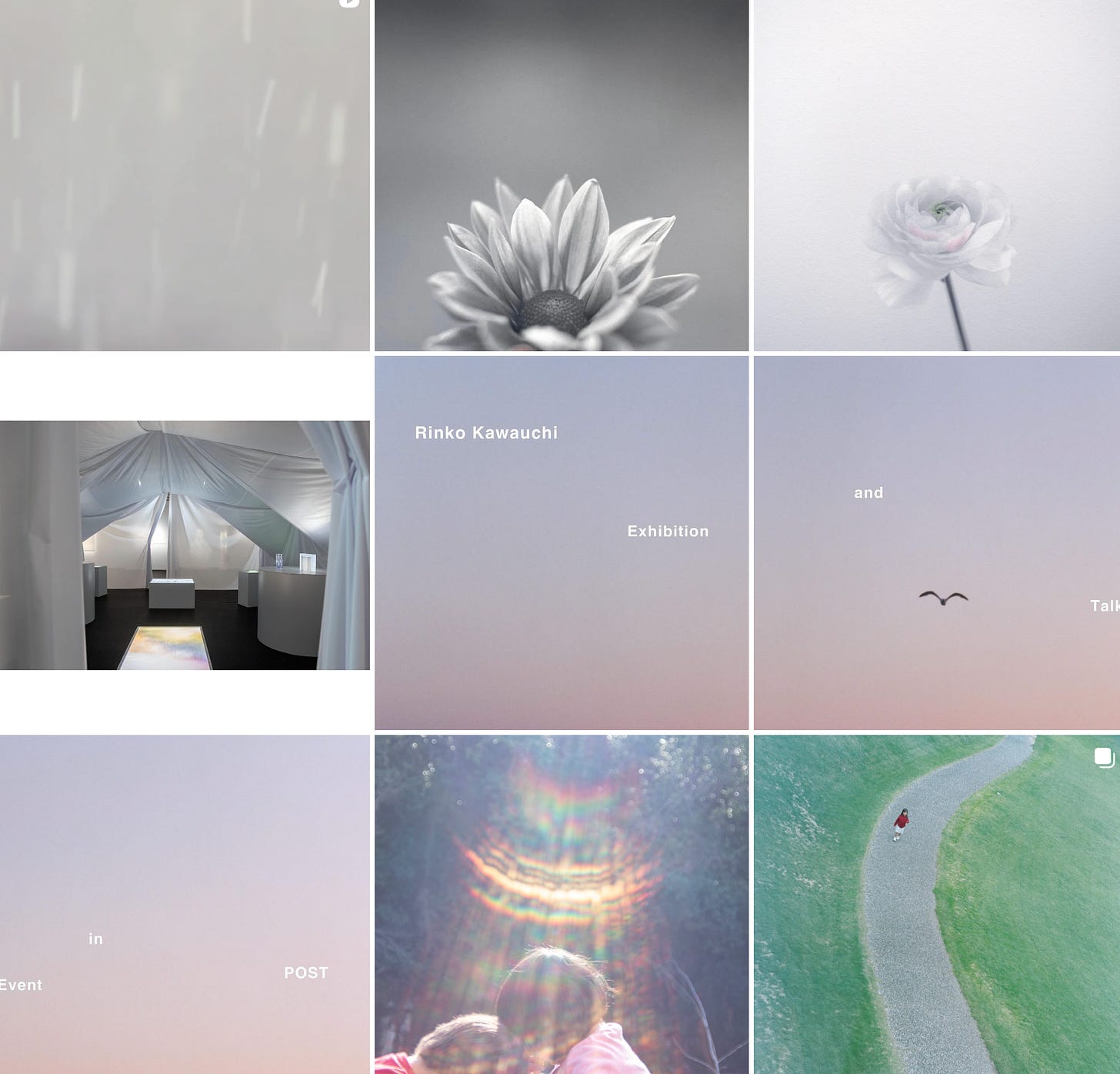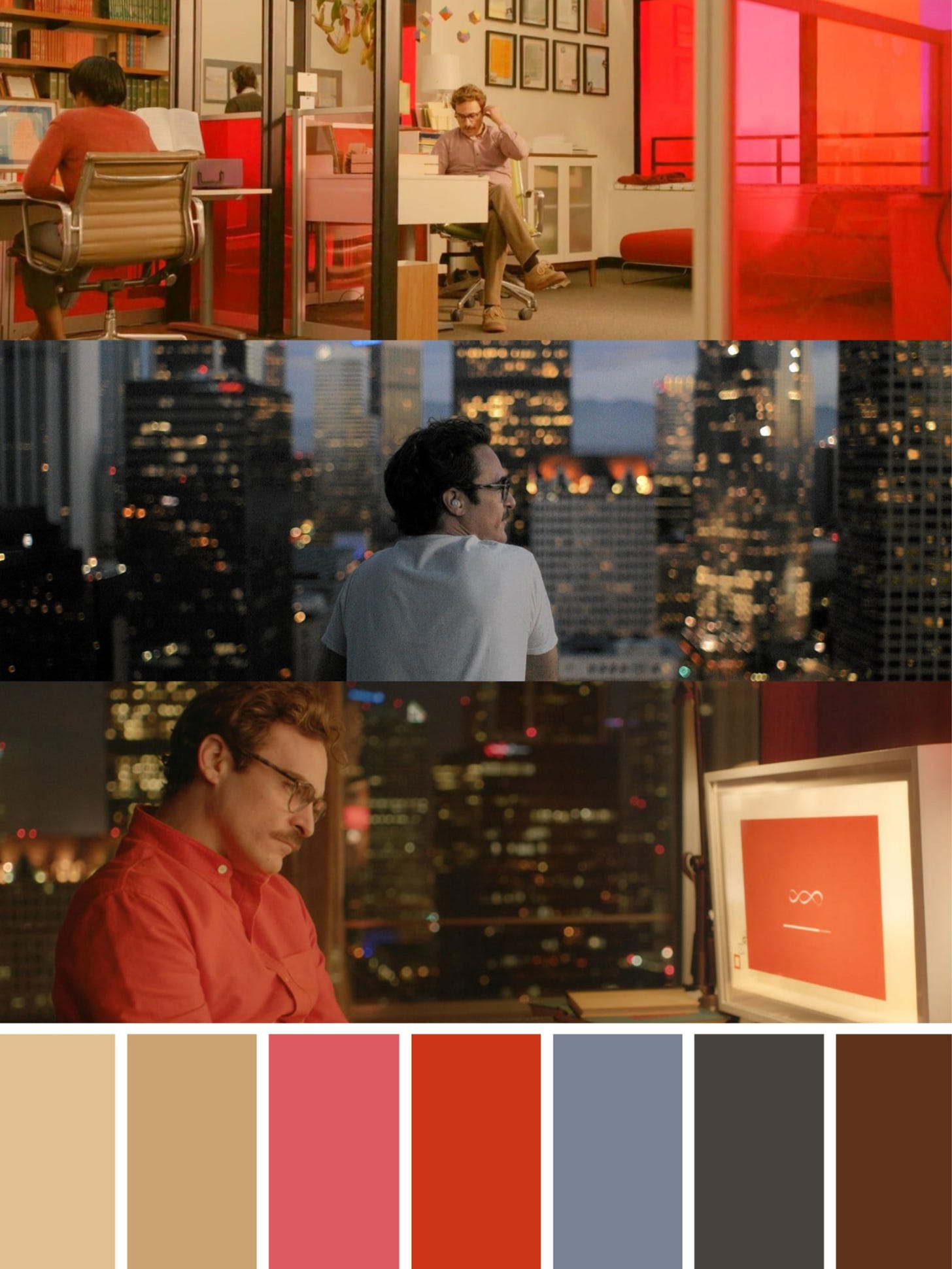Hey there. Been a few weeks. While I haven’t been publishing for the last month, I have been writing. A friend challenged me to a thirty-day writing challenge and I decided to give it a go. For the past two weeks, I’ve been writing a daily email/essay to some friends. No explicit rules other than sharing something every day, although I have tried to aim for about 1000 words a day and a certain completeness to each piece. The goal is that each one should be able to stand on its own.
It’s already been a rich and challenging experience and I’m excited to share more of my thoughts publicly when I cross to the other side. In the meantime, I figured I could share some of these essays more widely. Today’s is about a wonderful film, Her (2013), and an excellent video essay on it.
Her's Warm Future
I recently re-watched Her as my first screening in my Vision Pro. It’s a movie that highlights the tension between intimacy and loneliness. I've not found any art that manages to capture both at the same time so well, save Lost in Translation. That is of course no coincidence. It’s also about humanity and technology and where we might go together.
A friend then shared this video essay, which focuses on the film's unique aesthetic and the remarkable work of production designer K.K. Barrett (who also worked on Lost in Translation -- wow!). I also learned about Rinko Kawauchi and her photography's influence on the film. Give her Instagram a scroll: serene, and a great example of how one of photography's gifts to us as a medium is to help us see, to look a little closer, to linger.
The video eloquently conveys a couple of ideas that I've been pondering. Before watching it, I had a conversation with a friend about how the film captures an aesthetic and mood different from most sci-fi. How did they pull this off?
The obvious contrast is temperature: most sci-fi is cold, across materials, lighting, and emotions. As "kaptainkristian" explains more technically, Her's warmth is palpable and extends beyond the color palette. But it also can feel not so far off, more like a parallel time than a future one. Watching it ten years later, even the technology that felt novel in 2013 is more familiar to us now (airpods, AI, voice commands... ChatGPT's voice mode even has an option that sounds like Scarlett Johansson).
The Past as a Guide
In fact, watching Her can almost feel like looking backward, to a world with less demanding screens, objects with richer character, longer attention spans, and slower tempo. It even has a sense of timelessness which is impressive in any film, let alone sci-fi or a film that is "about" technology.
Of course, Her isn't really about technology. There's a great line in the video that explains part of how this achieved: "technology's advanced to a point where it no longer needs to prove its sophistication in its design." Later, "... it's a simpler future."
I was talking to someone who knows my friend J, about how he is so often ahead of the curve of what's cool. He's not someone who's clued into popular culture and generally has an independent information diet. Others are more "on-time" with cool, but he almost seems to be ahead of those on-trend people. This person observed that J spends a great deal of time on the past, especially in areas like design. She argued that he is constantly contextualizing the present through the lens of the past, he could see where things should or might go. It's almost contradictory and yet it's intuitive.
We see the same thing happening with Her, which has been praised for how compelling and even potentially accurate a future it predicted. How did Spike Jonez, Barrett, and team do it?
The video essay, again:
"Rather than trying to forecast innovation or technological progress, it draws from the past to be more relatable in the present. A vintage quality that makes you feel almost nostalgic for the future." Even simple details like the furniture and fashion of Her embody this idea, tweaking timeless elements of the past to make them feel fresh, but familiar.”
Technology and Presence
I've been thinking about presence and how technology helps or hinders it a lot lately.
There is technology that is object to us, a part of our environment: most traditional tools, purpose-specific devices, even speakers—despite music's ability to implicitly change how we feel. Then there is technology that we are subject to and that almost becomes our environment. It demands we operate within its bounds.
The latter is of course true about something like the Vision Pro, but also more subtly true about the iPhone, which masquerades as object but is actually constantly making demands of us, explicitly (what’s that notifcation) or implicitly (open phone to message someone, but I might just check Twitter real quick and now I'm being sucked into the void of consumption). In contrast to speakers, headphones or Airpods are another example of something on this end of the spectrum, despite the same medium, audio. They shut out the audio of the environment and are experienced alone.
I'm interested in technology that allows us to be more present; even, by the way, if that means presence in digital space. I don't think the Vision Pro is necessarily dystopic for that very reason, and the end of Tim Urban's review of it paints an optimistic picture, if you're interested. Cleo Abram's review is a good discussion of this, too. I even finally caught a glimpse of this future yesterday while playing games and watching videos over FaceTime with SharePlay.
If immersive technology—the kind we are subject to—is a path to presence within digital space, ambient technology could be the key to more presence in the real world, without becoming Luddites. From the video essay about Her's world in contrast to ours: "computers... are more akin to a framed piece of artwork than a window into digital entertainment."
They are object, even if amazingly capable. It's so subtle that I may be reaching, but the fact that Her's characters wear just one earbud, not two, is noteworthy. An ear to the digital world, and an ear to the real one (not necessarily maximally present, but you get the point). Perhaps we’ll get to a point where even ambient technology is so pervasive and embedded in our lives that we even become subject to it. Still, I’d argue that is the other end of the horseshoe on technology-based immersion and will still help us lead more present lives.
The point is that we should hope for technology that serves us, helps us connect, and can do marvelous things, but doesn't constantly demand our attention shift in its direction. I watched the Dieter Rams (2018) documentary and loved this quote toward the end:
“I think that all this digitization is becoming more and more a part of our life. I think it diminishes our ability to experience things.
There are pictures that disappear one after the other, without leaving traces up here [pointing to head]. This goes insanely fast, and maybe that's why we can, or we want to, consume so much.
The world that can be perceived through the senses exudes an aura that I believe cannot be digitized.
We have to be careful now that we rule over the digital world and are not ruled by it.”
Her isn't a perfect picture of the future I hope for, and I still find aspects of it to be potentially dystopic or at the very least quite lonely. The AI companion questions are coming, rapidly. The characters walk past each other having conversations with people or AI's somewhere else.
But the film is a good reminder that while technology's march might be inevitable, the ways we shape it are up to us.
Thanks for reading.
P.S. if you want more on Her and the Vision Pro, Andrew and I discussed it in our latest episode of Active Interrupting (51:17):
Note: I was more cynical about the Vision Pro in this conversation, as I hadn’t fully experienced SharePlay. Perhaps more on that soon!





